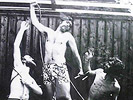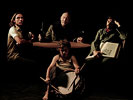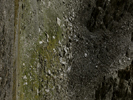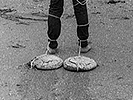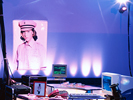/ cognitive performance / performances, lectures, workshops, exhibition concepts
2009-03-16 about cognition as an act and the aesthetics of command lines as plots
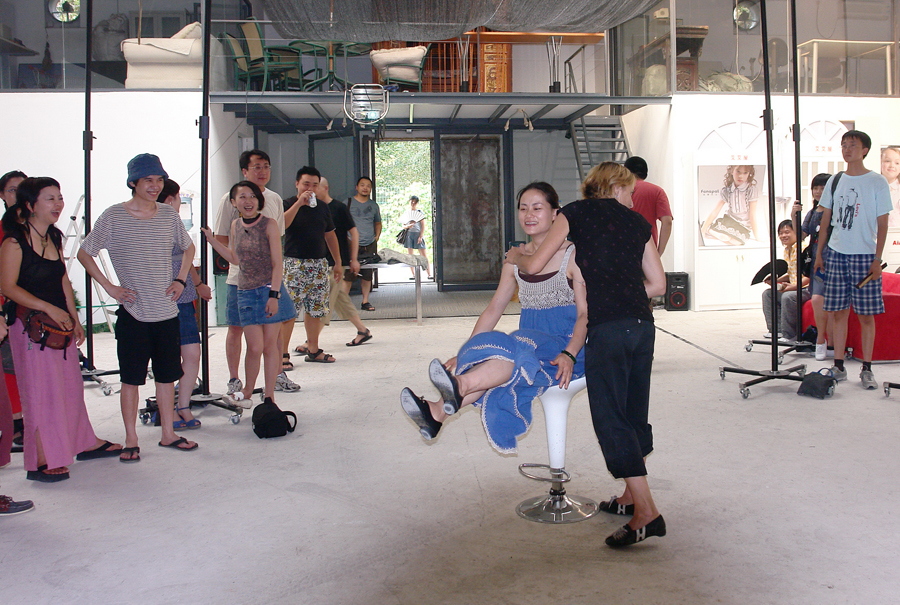
Underlining the aesthetical aspects of cognition as something you can stage and perform referring to the metaphers of computation, counting and measurement. The lecture presents gestures as cognitive units (pieces of reality) and performative plots as experimental measurement units of spaces or situations ("artificial" gestures produced in order to represent reality).
View and action: the point of view is also a question of access to an observation framework.
Lecture held at the China Academy of Art in HangZhou, China.
Picture: Dummy Variables, Beijing 2008-08-03; photographer: Litian Qiao
2009-04-19 about cognitive performance in public space (from 2:30 to 4:00 pm)
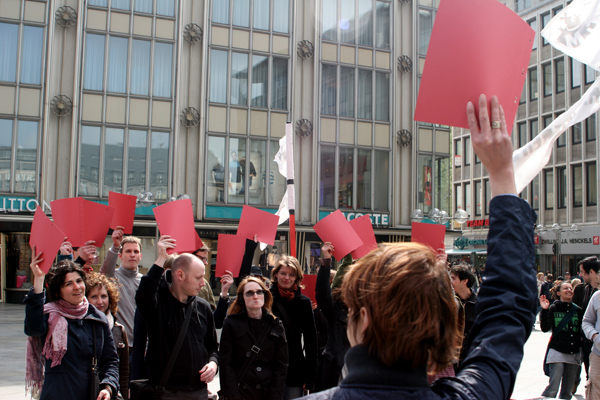
In collaboration with: raumgreifen! and art cologne, the public action took place at Domplatte Cologne.
Picture: In Public Space, Cologne 2009-04-09 photographer: Carolina Redondo
2011-07-3 VISION QUEST
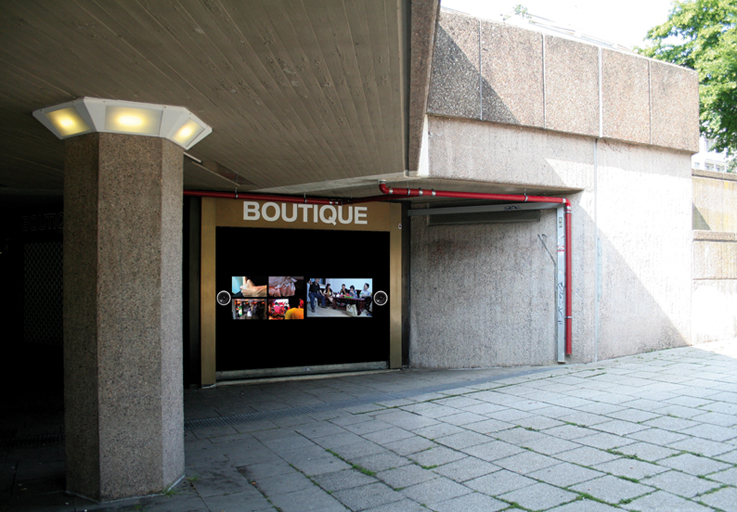
As we know the human eyes can only recognize the light between 770 to 390 nm wavelength, so what we see about the world is like the tip of the iceberg. Therefore human beings have created a variety of equipment to help themselves see more. We can not help but look forward to seeing more because of the natural curiosity of mankind: As far as viewing behavior, viewing habits and viewing ways are concerned, mankind always breaks through the visual limits by different ways.
The exhibition concept was developed in collaboration with School of Intermedia Art, Hangzhou. The presentation at Boutique Cologne was combined with an exhibition at Space5306 Shanghai. Curators: Art Institute of Basic Visual and Susanna Schoenberg.
2012-03-12 “blind spots: some strategies of how to deal with the open”
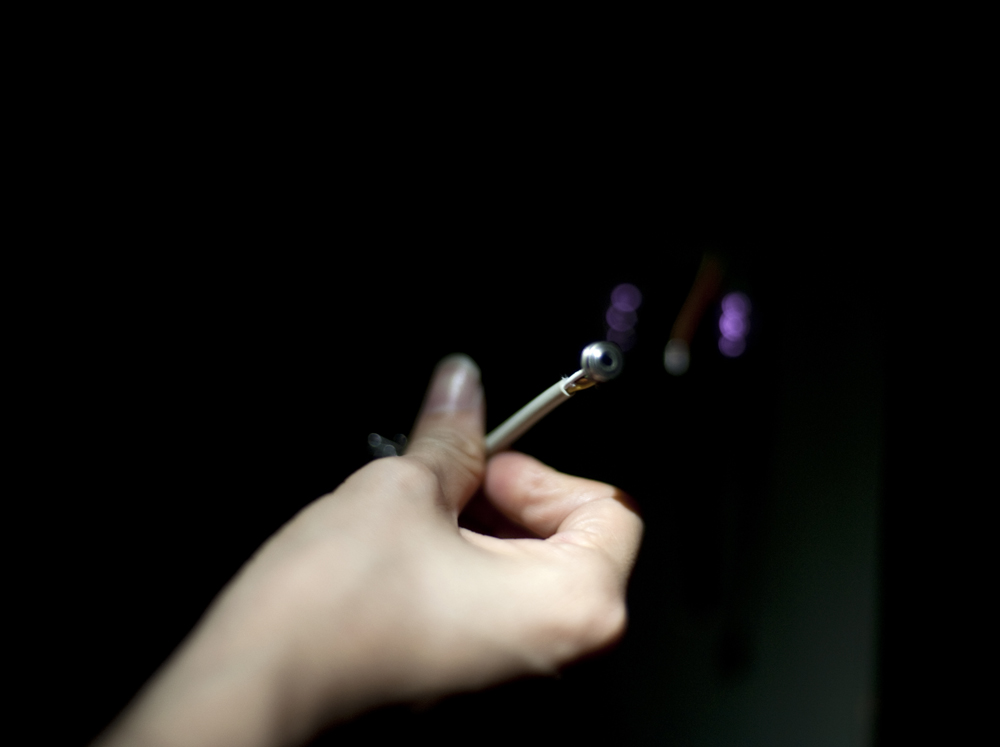
The lecture refers to the function of order and disorder in art, to the material and immaterial aspects of cognition and shaping, and to the (aesthetic) experience with the open.
Martin Heidegger should have stated: Even the lark is not able to see the open".
It collects fragments of reflections on the methodology of a possible aesthetic research, quoting from some European philosophy, applied scientific methodology, and artistic practice.
What the frog's eye tells its brain, when it detects a bug, and why is it necessary that we do not see our blind spots, and how computed detection and some self-blinding practice are used in art–these are some of the questions the lecture applied to channel the narrative.
Lecture held at EESI, Poitiers.
“shaping presence: a media-oriented program on reactivity as aesthetic dimension” (October 2012 - January 2013)
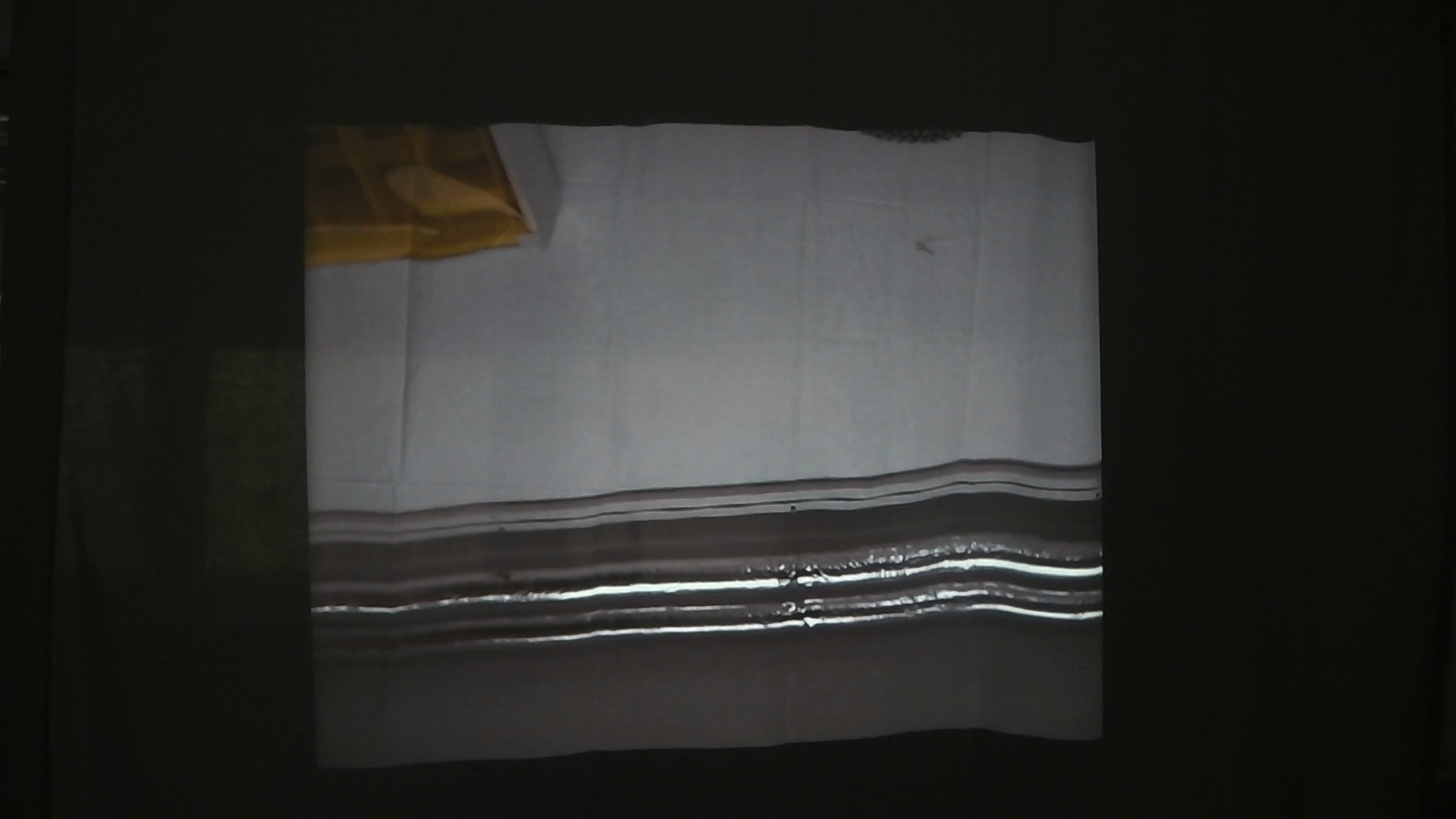
The subject is presence observed and discussed in relation to entities, practices and phenomena like bodies and avatars, simulation, automation, detection and tracking, tele-communication and other forms of ubiquity, virtuality, also in terms of memory and legacy, camouflage and embodiment.
The analysis and practice of presence-shaping considers the (rather solipsistic) dimensions of appearing, locating and disappearing, but the main focus is dedicated to reactivity as a current and topical set-up of aesthetic experience.
The course combines references out of the discourse of both art history and media theory with applicatory ideas: the programm includes artistic examples (taken from performance, conceptual and media arts) and some technical matter-of-course daily used for parameterising, treating and operating presence. The aspect of reactivity, the fact that technical systems define presence and can react to it, is going to be used also for practical exercises.
Seminar held at the Institut fuer Angewandte Theaterwissenschaften, Justus-Liebig-Universitaet, Giessen.
